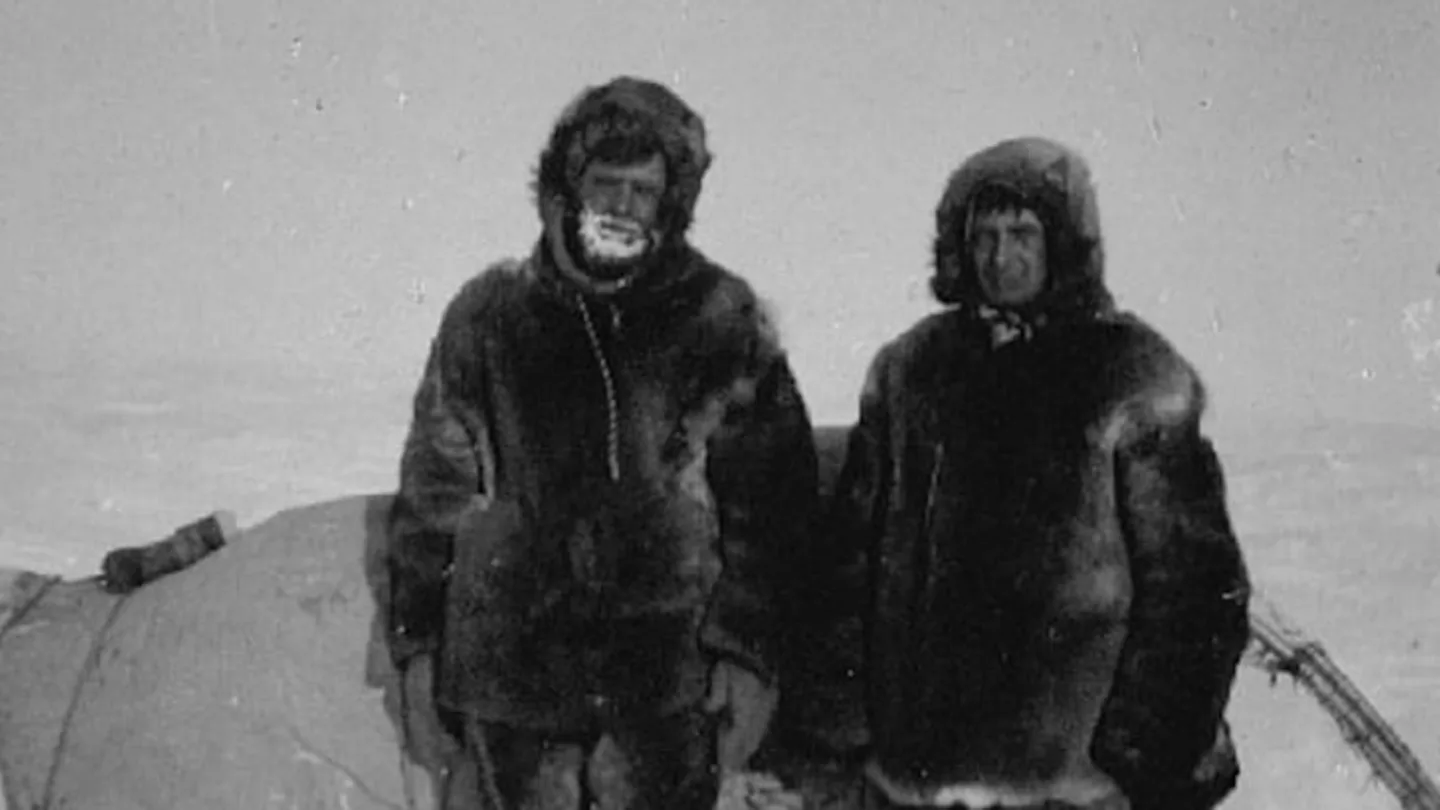DECEMBER 11, 2022 – Currently, snow conditions aren’t optimal, but I’ve learned to adapt. I’ve found a loop of skiable snow in “Little Switzerland,” a 10-minute walk from our house. My course is only a little over a kilometer but has what every serious x-c skier needs: two straight-aways—one for “V-1” (poling with every other stride of skate-skiing); another for “V-2” (poling with each stride); a downhill run; a long uphill incline; and two sharp uphill climbs. The long uphill slope followed immediately by a sharp additional climb are the most demanding parts of the circuit.
One lap isn’t particularly taxing, but multiple trips are. Like so many other challenges of endurance, “keeping yourself in the game” is a case of “mind over matter.” To motivate the mind, you need some effective imagery. The other night in the warm, ice-free comfort zone of our living room, I found a Netflix film of real life adventure that now serves as a perfect source of motivation: Against the Ice.
As a kid I was fascinated with arctic exploration and devoured biographies of such polar expeditioners as Byrd, Peary, Nansen, Amundsen and Shackleton and charted their routes across ice and snow. Coincidentally, I wound up attending Bowdoin College—also the alma mater of Admiral Peary and Donald MacMillan, who was a member of Peary’s 1908 expedition to the North Pole. But I’d never heard of Ejnar Mikkelsen, the Danish explorer, let alone members of the ill-fated 1908 “Denmark Expedition”: Ludvig Mylius-Erichsen, Niels Peter Høeg Hagen and . . . .Jørgen Brønlund. Mikkelsen sought to retrieve their bodies and diaries after the three had perished in northeast Greenland on a quest to discover the (non-existent, as it turned out) “Peary Channel.” Against the Ice is about the remarkable journey and survival of Mikkelsen and Iver Iversen, a young mechanic among the crew of Mikkelsen’s ship, the Alabama (I kid you not).
The film is based on Mikkelsen’s memoirs, also named, Against the Ice, but fact-checking reveals that the movie takes liberties with several critical elements of the story. What the movie doesn’t alter, however, is the fact that Mikkelsen and Iversen wound up stranded on Shannon Island, halfway up the east coast of Greenland, for two years (after a series of grinding expeditions over many months prior) and that two rescue parties missed them. Also, despite some nail-biting scenes (e.g. an attack by a polar bear; a sledge full of supplies and a lead sled dog tumbling off an ice cliff into an abyss), the movie doesn’t capture—because it can’t—the full challenge of arctic survival: scurvy, starvation, equipment failure, white-outs, shifting ice, towering ice ridges and life- and limb-threatening frost-bite.
And of course, 110 years ago, polar explorers didn’t have smartphones with GPS, modern survival gear, or the possibility of airdrops for re-supply.
Now when the “going gets tough” around my x-c circuit in “Little Switzerland,” at the heart of a large metropolitan area, I think of those two intrepid Danes, who for nearly three years, defied odds against survival in Greenland. Then another two or three laps seem like a piece of . . . baked Alaska.
(Remember to subscribe to this blog and receive notifications of new posts by email.)
© 2022 by Eric Nilsson
